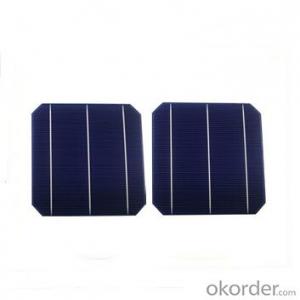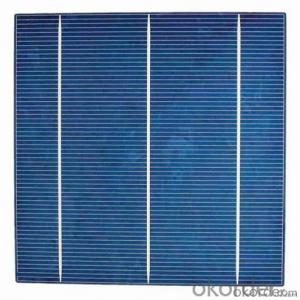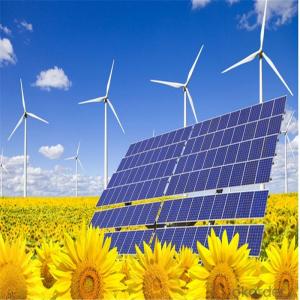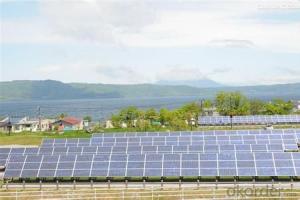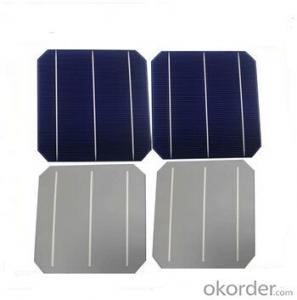Pecvd Solar Cells
Pecvd Solar Cells Related Searches
Except For Solar Cells Weegy Problems With Solar Cells High Power Solar Cells Light Trapping In Solar Cells High Performance Solar Cells High Output Solar Cells High Wattage Solar Cells Energy Transfer In Solar Cells High Efficiency Hvac Systems Recombination In Solar CellsHot Searches
Cheap Solar Cells For Sale Flexible Solar Cells For Sale Q Cells Solar Panels For Sale Printed Solar Cells For Sale Bulk Solar Cells For Sale 6x6 Solar Cells For Sale Broken Solar Cells For Sale Cpv Solar Cells For Sale Photoelectric Cells For Sale Price Of Silicon Solar Cells Price Of Solar Cells Over Time Buy Solar Cells From China Cheap Solar Cells China Best Type Of Solar Cells Flexible Solar Cells Price Q Cells Solar Panels Price 3 Types Of Solar Cells Production Of Solar Cells Common Types Of Solar Cells Q Cells Solar Panel PricesPecvd Solar Cells Supplier & Manufacturer from China
Okorder.com is a professional Pecvd Solar Cells supplier & manufacturer, offers integrated one-stop services including real-time quoting and online cargo tracking. We are funded by CNBM Group, a Fortune 500 enterprise and the largest Pecvd Solar Cells firm in China.Hot Products
FAQ
- Dust storms have a negative impact on solar cell efficiency. The accumulation of dust particles on the surface of solar panels obstructs sunlight from reaching the photovoltaic cells, reducing their ability to convert sunlight into electricity. This dust buildup decreases the overall power output of the solar panels and requires regular cleaning and maintenance to maintain optimal efficiency.
- Solar cells typically do not perform optimally in areas with high levels of snowfall. The accumulation of snow on the surface of the cells can block sunlight and reduce their efficiency. However, advancements have been made to design solar panels with self-cleaning features or tilted angles that can help shed snow. Additionally, regular maintenance and clearing of snow can help ensure the continued performance of solar cells in such areas.
- Solar cells are designed to handle temperature fluctuations by using materials that can withstand a wide range of temperatures. They typically have a positive temperature coefficient, meaning their efficiency increases with decreasing temperature. Additionally, solar cells are often constructed with thermal management systems, such as heat sinks or ventilation, to dissipate excess heat and maintain optimal performance.
- Yes, solar cells can be used in healthcare facilities. They can be employed to generate renewable and clean energy, reducing reliance on fossil fuels and minimizing carbon emissions. Solar panels can power medical equipment, lighting, and other electrical needs, ensuring a continuous and reliable energy supply. This can be particularly useful in remote or underdeveloped areas where access to electricity may be limited. Additionally, solar energy can contribute to cost savings by reducing the facility's electricity bills.
- Solar cells can be integrated into building designs in a variety of ways. They can be incorporated into the roof or facade of a building, where they function as both a renewable energy source and a structural element. Additionally, solar cells can be installed as shading devices, such as solar awnings or sunshades. This integration allows buildings to generate electricity from the sun while maintaining an aesthetically pleasing design.
- Yes, solar cells can be used in telecommunications. They can power various telecommunication devices such as cell phones, radio transmitters, satellites, and remote communication systems, especially in areas with limited access to electricity grids. Solar energy can be harnessed to charge batteries or directly power these devices, providing a reliable and sustainable source of energy for telecommunications.
- Yes, solar cells can generate electricity on cloudy days. While their efficiency may be reduced compared to sunny days, solar cells can still convert sunlight, even on cloudy days, into usable electricity.
- The role of solar cell inverters in grid-tied systems is to convert the direct current (DC) electricity generated by the solar panels into alternating current (AC) electricity that can be used by the household or fed back into the electric grid. In addition to converting the electricity, solar cell inverters also monitor and control the flow of power, ensuring the system operates safely and efficiently.

















